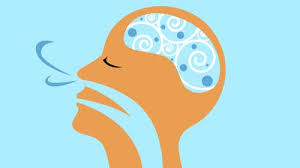Breathe…

“The respiratory system is the gateway to purifying the body, mind, and intellect. The key to this is pranayama.”
BKS Iyengar in Light on Pranayama pg 17 #10
I was already thinking of writing about the breath and the practice of pranayama (regulation of the breath) in regards to the practice of yoga, and then Chris mentioned it in her class this morning too, so must be the blog topic of the day! Especially at this time when we are facing a disease that tends to attack the respiratory system, it is important to start to truly remember…breathe…
The actual practice of pranayama is placed after the practice of asana (posture) in The Yoga Sutras as the 4th limb of yoga. As a matter of fact, The Yoga Sutras make a clear step in the process by saying that the practice of Pranayama comes only after perfection of asana has been achieved (Yoga Sutra II.49). On the surface this seems extreme, but in reality it is an important distinction to make. To breathe well and to be able to be sensitive to the breath and to be able to control the breath in any way takes some amount of space and awareness of the workings and movements of the body, not to mention some focus and uninterrupted attention of the mind. The other reason for this distinction comes from the understanding of the power that the breath actually contains.
Prana according to yoga is not just “breath”, but also life, vitality, energy, and strength. It is literally the energy that runs through all of life, so to begin to control or manipulate it gives us also great power over our health and wellbeing. With that power we must take care and be gentle. To overdo or rush in without guidance or presence can have negative instead of positive effects.
But that doesn’t mean not to practice it. The breath is always present. “As long as there is breath in the body, there is life. When breath departs, so too does life. Therefore, regulate the breath.” (Hatha Yoga Pradipika – Ch 2, stanza 3) The yogis believed that in regulating the breath you prolonged your life. And with fighting the Coronavirus even the most basic practices of pranayama can be helpful to keep our respiratory system fresh and strong.
In Light on Pranayama, BKS Iyengar breaks down the practices of pranayama from the most basic to the most complex. He also covers detailed information on the respiratory and energetic systems so that we know all the layers of our being the manipulation of the prana can touch. At the very start, the most important aspect of making breath control effective is awareness.
Through the practice of asana, we learn to open the chest and strengthen the spine, we mobilize the ribcage and and expand the hips. All of this physical space is needed to bring breath more effectively into the body. With focus on the body, the mind concentrates itself to a deeper and more subtle awareness. And, when we lie down for Savasana (relaxation), with the body at rest and the mind quiet, we can start to experience the breath “as is”, without disturbance or distraction. This is the first pranayama – complete awareness of the normal breath as it comes in and as it goes out.
Just that awareness allows the mind to calm down and decrease some of the stress and anxiety of our current situation. Past that, we can start to lengthen the exhalation or deepen the inhalation depending on our needs.
Lengthening the Exhalation : This is the second mode of pranayama according to BKS Iyengar. The extension and length of the exhalation softens the abdominal cavity and quiets the nervous system. It directs mental attention inward and rids the body of undo tensions that restrict free movement of the breath. This is a “cooling” practice that will decrease blood pressure and anxiety.
Deepening the Inhalation : Once there is freedom and space in the abdomen and the mind has become more quiet and sensitive, a deeper inhalation may be practiced for support and courage. For many of us, we have restricted our breath to only the abdominal area with inhalation and exhalation pumping at the belly alone. But there is a VAST amount of space within the chest cavity where the lungs reside that sometimes gets missed when we breathe this way. A full and expansive chest brightens your mood and brings energy if feeling heavy or depressed.
No matter what, we want to keep breathing. During times of stress or anxiety you might notice that you hold your breath. So, pay attention and develop some awareness around your breathing habits. Even if just for a few cycles a day, start to be mindful, be reflective, and breathe…